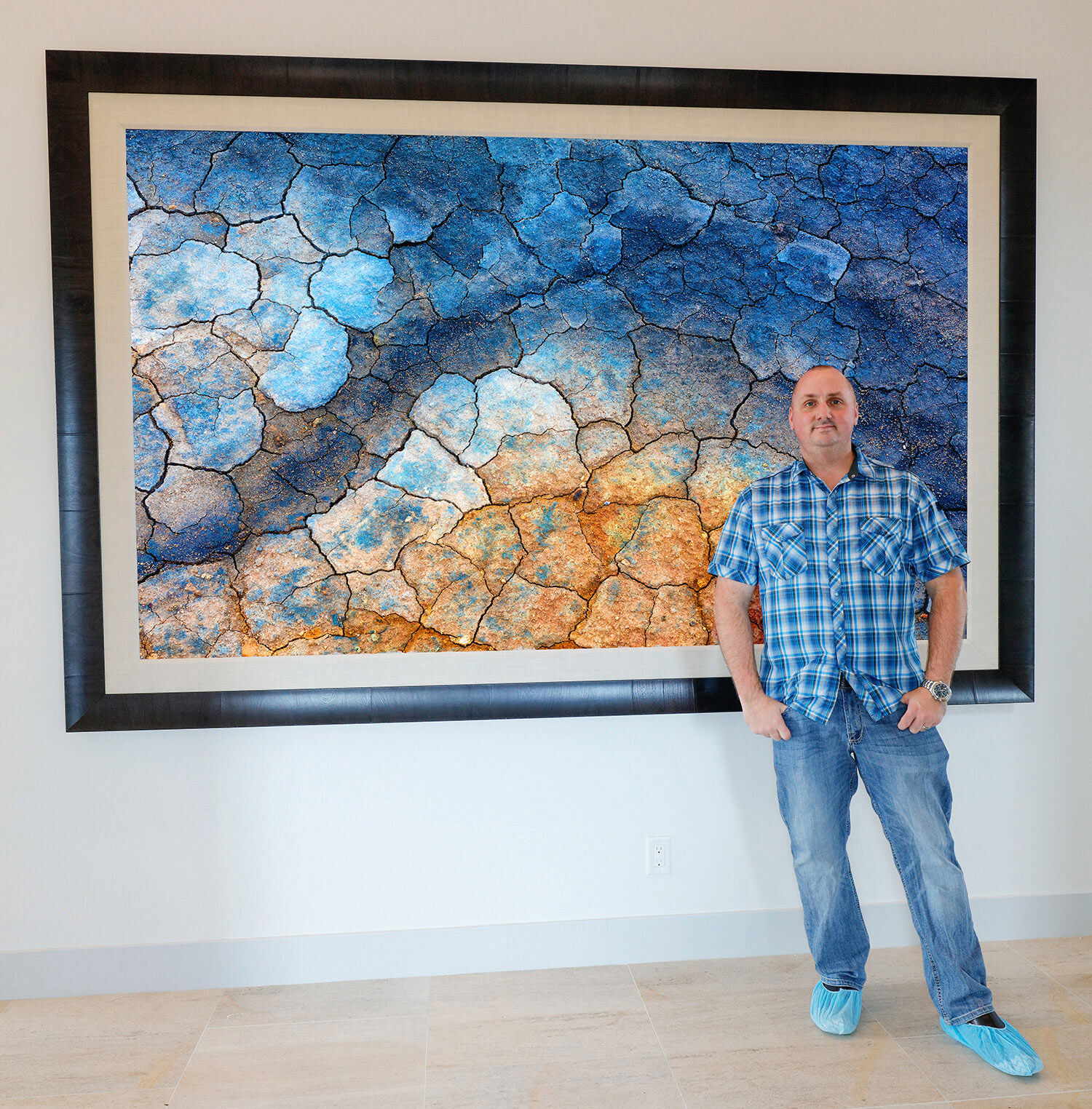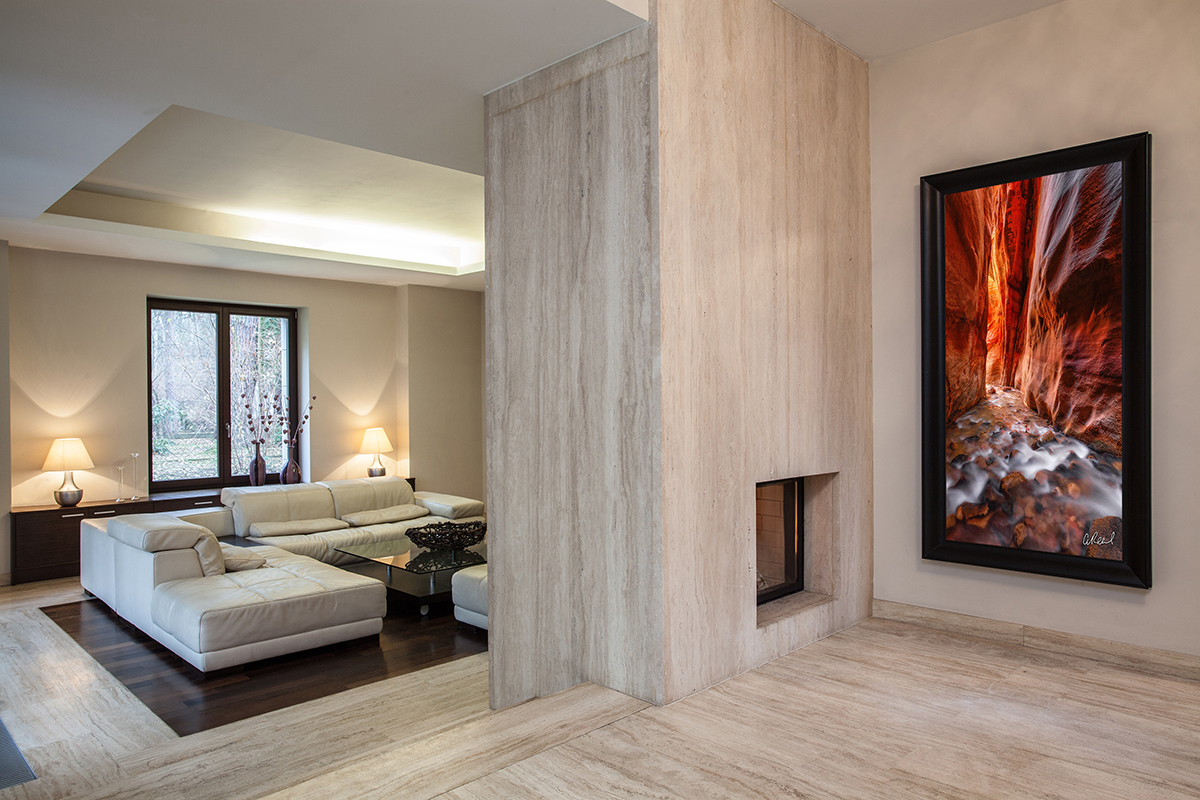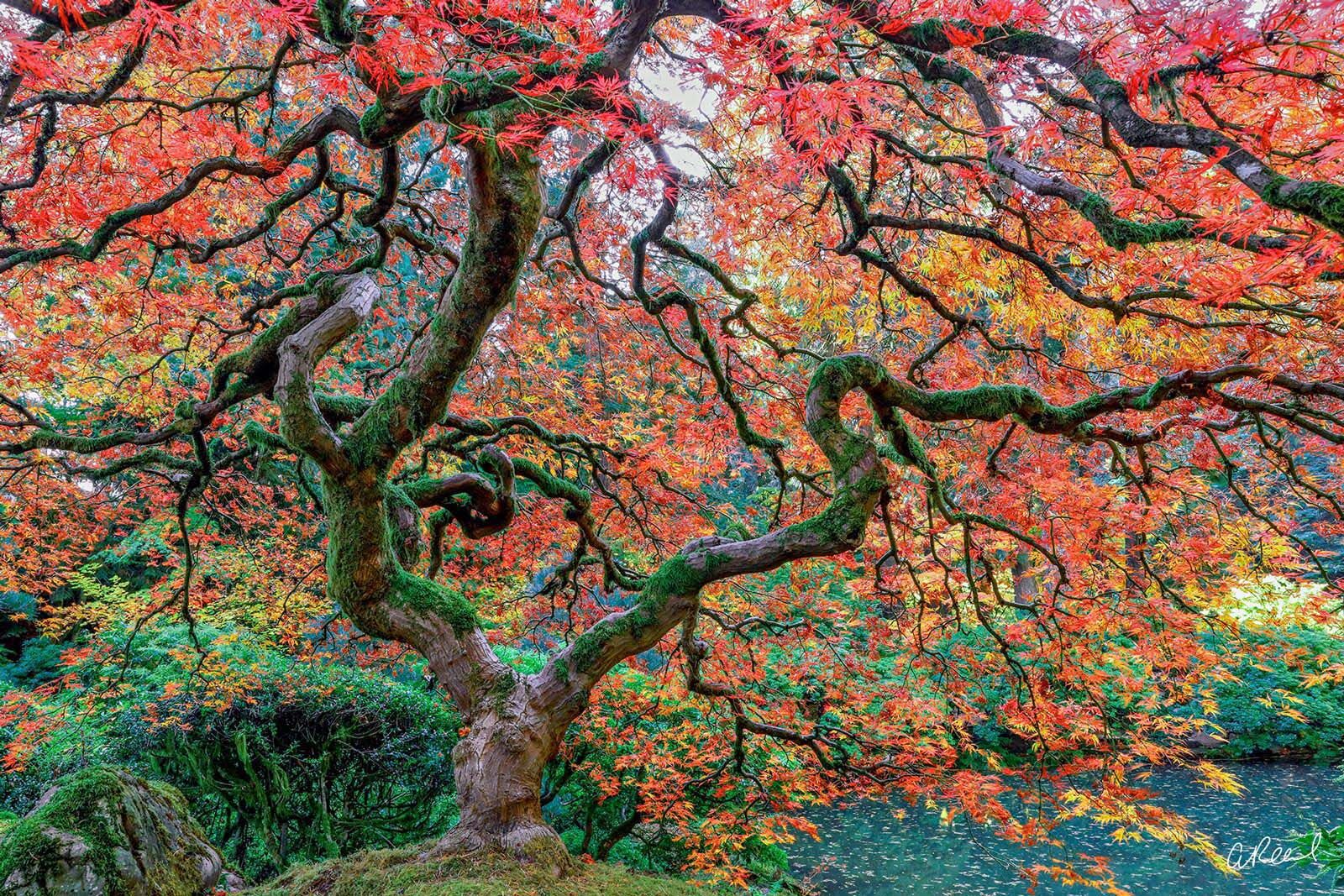[ad_1]
Lighting Photography Prints In Your Home Like A Pro
Now that you have found the perfect photograph to transform your space, it is important to choose the best way to illuminate your artwork. Quality lightning can make the difference between a piece of art being overlooked or commanding the attention of every guest entering the room. Soft, targeted lighting also brings out beautiful detail, tonal transitions and colors that may otherwise be lost to the viewer. You have a fair amount of choices when it comes to lighting, each having its own set of benefits and considerations. The best lighting enhances the artwork, without distracting from the rest of the decor in your room. Before we go any further, lets discuss the various types of lighting available to you.
Ceiling-Mounted Accent Lighting
Spotlights mounted from a ceiling facing downward offer an easy and adjustable solution for illuminating art. They can be surface mounted, chosen for their aesthetics as part of the overall design of a room or recessed, completely obscuring any housings in the ceiling for a more clean and minimalist approach. Either way, ceiling mounted lighting should be placed at a 30-degree angle, directed at the center of the artwork and should provide a soft even spread of light, illuminating the majority of the print without distracting hot spots or unbalanced coverage. Lighting directed at this angle reduces the amount of shadowing cast onto the wall below the art and eliminates reflective glare caused by fixtures mounted too far back from the wall.
Track Lighting
While essentially providing the same benefits and overall look of ceiling-mounted lighting, track lighting can be beneficial for those who have multiple pieces of art across a room or for those who enjoy moving or changing out their artwork seasonally or as their decor changes. Track lighting is also typically easier to install and carries a reduced cost of installation as well. Today, track lighting can be found that is much more flattering than the bulky cream-colored tracks you may be used to seeing, but regardless of the design, one must still consider the overall aesthetics of track running across the ceiling.

Wall Washers
Wall washers offer a more convenient and flexible way to illuminate large or multiple piece art installations. Wall washers can be mounted from the ceiling or floor and come in many forms and styles. This style of lighting often works well in modern homes full of symmetry and contrasting lines and shapes. While I have seen varieties of this type of lighting that worked well in my opinion, I personally prefer a more targeted and specific approach.
Picture Lights
Picture lights are mounted directly above or even from the frame of individual artworks and in most cases are low wattage light sources with a very small spread of illumination. You have probably seen paintings utilizing this style of lighting and while the fixtures themselves can be decretive and add to a rooms overall decor, I personally have never appreciated the look or the lack of uniform illumination they offer. With the exception of the most inexpensive battery-operated lights, an outlet or hard wires will still be needed where the artwork is to be displayed.
Conservation And Considerations
It is important to take preservation into account when illuminating most types of artwork. Photographic prints are no exception to this rule. While they may not be as delicate as that Vincent Van Gogh or Claude Monet you dream of stumbling across at a local estate sale, improper lighting can cause fading and unsightly color shifts that will destroy the visual appearance of the work over time.
There are some easy to avoid mistakes when hanging and lighting artwork that should be considered to avoid damage to your artwork:
* Avoid Direct Sunlight. Ultraviolet light and radiation can cause fading even when artwork has been protected against direct lighting with a UV coating or other surface protection.
* Do Not Allow Direct Facing Light Sources. This will protect your artwork from heat damage. If you are unsure, place your hand near the surface of the artwork while under the light source. If you can feel the heat, it is too close.
* Avoid Fluorescent Lighting. High levels of UV light accelerate fading and color shifting.

Halogen vs LED
While Halogen bulbs historically have been a favorite of many art galleries around the world, many are now being replaced with LED’s. Halogen bulbs produce large amounts of infrared (IR) and ultraviolet (UV) radiation that can be damaging to your artwork over time if mounted too closely. These types of bulbs also run very hot and can cause burns if touched. Halogen lighting has been widely used due to the quality of the light source itself and its bright, white illumination. Also, when compared to incandescent bulbs, there are many advantages.
Today, we have the benefit of LED technology. Where LED bulbs were once shunned due to the bluish light that they cast, LED’s have come a long way in a short period of time. A wide variety of color temperatures are now available, and while a more expensive option up front, LED lighting pays for itself over time with lower energy costs. Even Michelangelo’s painted ceiling of the Sistine Chapel was updated using a staggering 7,000 LEDs. After fading from sunlight exposure and harmful halogen lighting, the switch was made, extending the opportunity for the work to be enjoyed for decades to come.
SoLux ColorView LED Artlight
Tailored Lighting Inc., is the maker of Solux, a patented light source that provides an unparalleled replication of natural daylight. SoLux is used by many of the world’s top museums including the Musee d’Orsay, Van Gogh Museum, and Guggenheim Museum and the National Archives.
The ColorView LED Artlight is the result of nearly a decade of research and development. The ColorView LED light fixture offers unsurpassed light quality, stability, and flexibility of use, providing optimal presentation and preservation of art. The color temperature is 3150K, has excellent color consistency fixture to fixture and tilts and swivels in all directions. The ColorView LED Artlight offers flexibility of use with continuous beam spread adjustment from 12 degrees (5721 Candlepower) to 60 degrees (1302 Candlepower).
The ability to change beam spread from 12 to 60 degrees provides the perfect solution for lighting artwork. There is minimal light spill around the painting. The ability to dim with with a standard incandescent dimmer switch means perfect light levels every time with no flicker.
The team at Solux will help every step of the way in creating beautiful lighting for your home or office. Please reach out to them directly to learn more about the great lighting systems that they offer.
For past, present and future collectors of my work, I am always happy to help in any way that I can. I look forward to discussing your vision and how I can help you create a beautiful space you will love to come home to.
Fine Art Photography Lighting With LEDs
There are many ways in which you can light art and photography on the walls of your home and office. However, how you light your walls and art matters! It is not as simple as getting the most powerful light you can find and setting it upon your favorite artwork. The quality of light matters, and if you want to be able to tell those hues apart with any accuracy, you’ll need to opt for the right kind of lighting.
We call it fine art photography lighting, and the good news is that with today’s LEDs, it’s easier than ever. Gone are the days of trying to match tungsten or fluorescent bulbs to your viewing areas and preferences — modern-day LEDs are capable of achieving a light similar in quality and consistency to the sun, which is the ideal lighting source that provides a cool and natural blue light.
Compared to traditional tungsten, fluorescent or halogen bulbs, LEDs represent some of the best fine art photography lighting options available today. Not only do they render colors with greater accuracy in the crucial natural range (5000K to 5300K), but they also won’t cast a yellow or orange hue to the imagery that adorns your walls, giving a faded, dull or warm look that hides the true colors of the art.
While halogen lighting can achieve those same hues and vibrant colors, it’s unfortunately not the desired fine art photography lighting option due to both the heat and UV rays that are emitted. Over years and years, that can start to oxidize the surface and cause damage, potentially altering the image itself.
Ideally, the best fine art photography lighting is cool-running LEDs that won’t deceive your eyes. LEDs are also much smaller and lighter than traditional lighting techniques, allowing for easy track lighting installations or adjustable recessed lighting that offers the utmost in flexibility while also being friendly to the budget.

The twisting and curled nature of the Japanese Maple tree makes for an incredible subject during any time of year but none more special or beautiful than its brief transformation during autumn. Fine Art Limited Edition of 100.

A small patch of aspen trees displaying beautiful autumn foliage with red undergrowth located near Tumwater Canyon in Leavenworth, Washington. Fine Art Limited Edition of 50.

Elevate your home with Aaron Reed’s limited edition photography print, On Earth As It Is In Heaven, from his Newest Work Photography collection. Order yours today! Fine Art Limited Edition of 100.
[ad_2]
